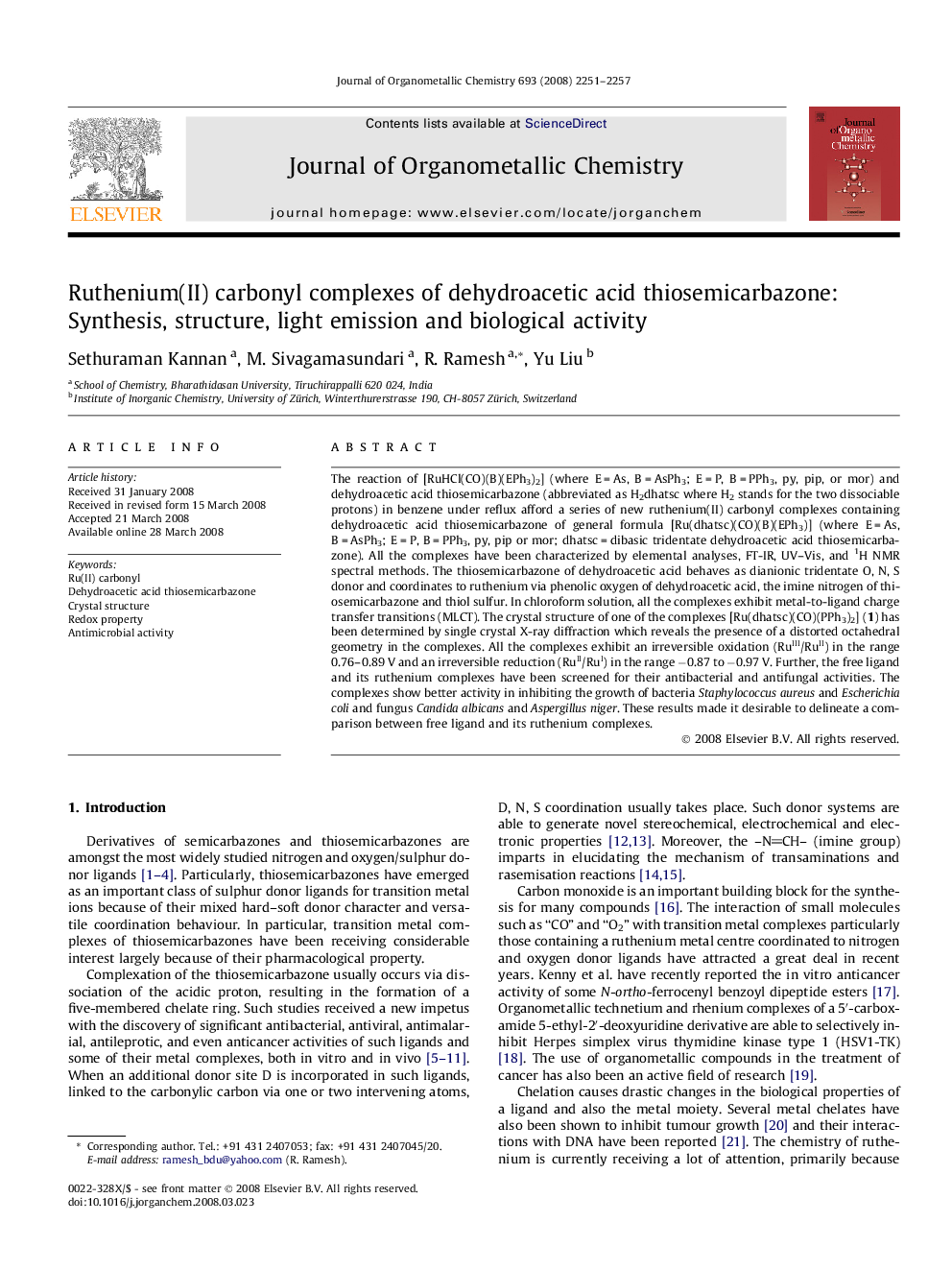| Article ID | Journal | Published Year | Pages | File Type |
|---|---|---|---|---|
| 1323154 | Journal of Organometallic Chemistry | 2008 | 7 Pages |
The reaction of [RuHCl(CO)(B)(EPh3)2] (where E = As, B = AsPh3; E = P, B = PPh3, py, pip, or mor) and dehydroacetic acid thiosemicarbazone (abbreviated as H2dhatsc where H2 stands for the two dissociable protons) in benzene under reflux afford a series of new ruthenium(II) carbonyl complexes containing dehydroacetic acid thiosemicarbazone of general formula [Ru(dhatsc)(CO)(B)(EPh3)] (where E = As, B = AsPh3; E = P, B = PPh3, py, pip or mor; dhatsc = dibasic tridentate dehydroacetic acid thiosemicarbazone). All the complexes have been characterized by elemental analyses, FT-IR, UV–Vis, and 1H NMR spectral methods. The thiosemicarbazone of dehydroacetic acid behaves as dianionic tridentate O, N, S donor and coordinates to ruthenium via phenolic oxygen of dehydroacetic acid, the imine nitrogen of thiosemicarbazone and thiol sulfur. In chloroform solution, all the complexes exhibit metal-to-ligand charge transfer transitions (MLCT). The crystal structure of one of the complexes [Ru(dhatsc)(CO)(PPh3)2] (1) has been determined by single crystal X-ray diffraction which reveals the presence of a distorted octahedral geometry in the complexes. All the complexes exhibit an irreversible oxidation (RuIII/RuII) in the range 0.76–0.89 V and an irreversible reduction (RuII/RuI) in the range −0.87 to −0.97 V. Further, the free ligand and its ruthenium complexes have been screened for their antibacterial and antifungal activities. The complexes show better activity in inhibiting the growth of bacteria Staphylococcus aureus and Escherichia coli and fungus Candida albicans and Aspergillus niger. These results made it desirable to delineate a comparison between free ligand and its ruthenium complexes.
Graphical abstractFive new ruthenium(II) carbonyl complexes containing dehydroacetic acid thiosemicarbazone have been synthesized and characterized by analytical and spectral (IR, UV–Vis, and 1H NMR) methods. The molecular structure of one of the complexes [Ru(dhatsc)(CO)(PPh3)2] (1) has been determined by single crystal X-ray diffraction. The complexes show better activity in inhibiting the growth of bacteria Staphylococcus aureus (209 P) and Escherichia coli (2231) and fungus Candida albicans and Aspergillus niger.Figure optionsDownload full-size imageDownload as PowerPoint slide
